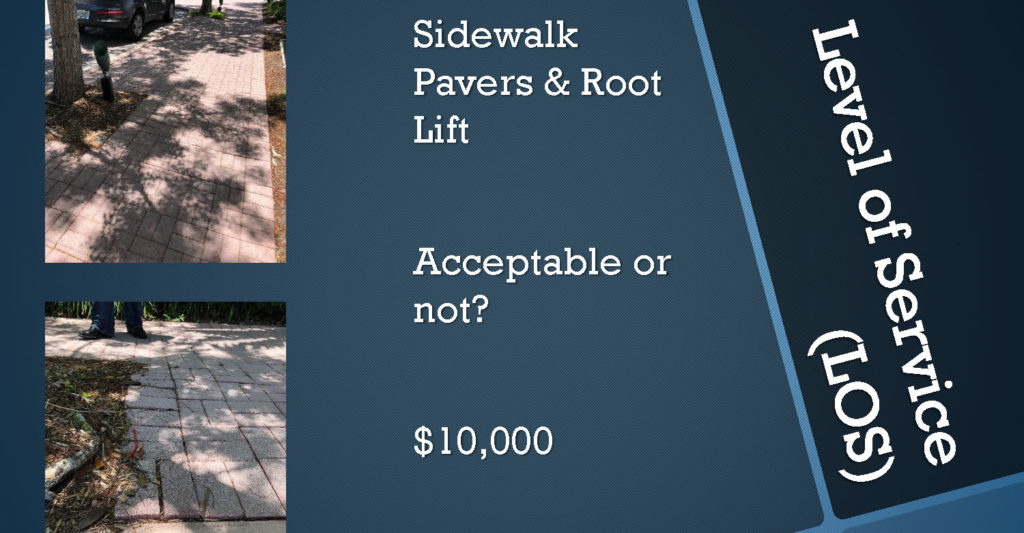KB Manager Proposes Tax Cuts in Operating Budget
Tony WintonJune 17, 2019

Severe street flooding during midday storm on Harbor Drive in Key Biscayne, June 16 2019. The Village is considering nearly $100 million in resiliency projects for the 2020 budget (Key News/Tony Winton)
Village Manager Andrea Agha is proposing tax cuts in her first operating budget for the Village of Key Biscayne, but those hoping for smaller bills might not want to get their hopes up. While her initial budget assumes the island’s local government will absorb a 2.8% decrease in property values and pass about $700,000 to property owners, it also leaves room for additional debt service expected if the Village borrows large sums for resiliency and other projects.
The manager says her decision reflects direction from the Village Council.
“The Council’s No.1 priority is to find efficiencies in government,” she said. Her methodology assumes that the tax rate, or millage, will stay constant, instead of adjusting upward to bring in the same amount of dollars as last year, $25 million. The result is a tax decrease equivalent to about $53 for each of the island’s 13,000 residents.
The tax decrease could be short-lived, however, if the Village borrows or taxes directly for more than $100 million of capital projects identified by the manager.
Key Biscayne’s 2018-19 tax rate was one of the lowest in Miami-Dade County, standing at 16.0 mills when fire rescue and other services are included. When looked at on a per-capita basis, Key Biscayne’s level of spending was about $2,700 per resident in 2018, versus nearly $3,300 per resident in Coral Gables, which also has its own fire service. When a municipality provides fire rescue services, taxpayers avoid a County-imposed tax, which was 2.4 mills in 2018.
The decision about whether to keep spending and service levels the same will be the thorny questions for the Council, and it was a theme of Agha’s initial slide presentation.
It featured a series of pictures of cracked pavers, weedy traffic islands, and a temporary public works shed sitting outside the Fire Rescue Department.
“Acceptable or not?” her captions read.
“It’s going to be tricky,” said Mayor Mike Davey of the summer long budget process. It’s not as easy as saying ‘let’s just cut.’”

In this undated slide from the Village of Key Biscayne, Manager Andrea Agha lays out an example of ‘level of service’ spending for the Village Council to decide as it considers the 2020 budget (Village of Key Biscayne via Key News)
Agha’s initial numbers showed that even with privatization of the code compliance office, a staffing freeze in other areas, and a 50% cut in legal expenses, there would still be a revenue shortfall of $150,000.
Perhaps even more significant is that Agha’s budget assumes a constant-dollar allocation for staff time, even though current union contracts call for a 2.2% cost of living increase Oct. 1.
The proposal includes her recommendations for new spending, too:
- $400,000 for a redesigned website and a new computerized financial system to better track costs.
- $100,000 to outsource a Chief Resiliency Officer from Miami-Dade County or Miami Beach.
- $50,000 to rewrite the zoning code.
Agha’s presentation also laid out choices for spending for advisory boards and community groups, some of which are seeking increases. Some of the biggest requests for new spending were $100,000 for a consultant to the new 2040 Strategic Vision Board, and well as new programs such as Key Biscayne Car Week ($18,000) and the Piano Festival ($29,500).
Aside from taxes, Agha laid out other choices, such as reducing Village subsidies of the Community Center and collecting more fees for a range of services from fire inspections to stormwater utility fees.
Council Member Ed London, who has long sought detailed financial analysis of Village spending, says he was encouraged by the “zero-based” budgeting approach, but said he is focused on eliminating waste, not services.
“I’m not looking for second-class service. I’m looking for first class, with efficiency,” London said.
Capital Projects
On capital projects, Agha laid out $116 million of possible spending, some of which might be reimbursed.
- $46 million for utility undergrounding,
- $25 million for stormwater improvements,
- $23 million for beach nourishment,
- $14 million for expansion of the Community Center
- $5 million for a parking garage.
Other big possible spends could be up to $17 million for purchase of the entry block, nearly $5 million for pocket parks on Harbor Drive, and potential arrangements with Crossbridge Church and the Suntrust building, which may come on the market soon.
The Council has already signaled its intent to borrow up to $50 million for the undergrounding project, but the project is on pause as officials wait to learn how much of the project might be done by Florida Power and Light under new state legislation.
Agha told the Council that the Village’s debt cap is currently $70 million.


